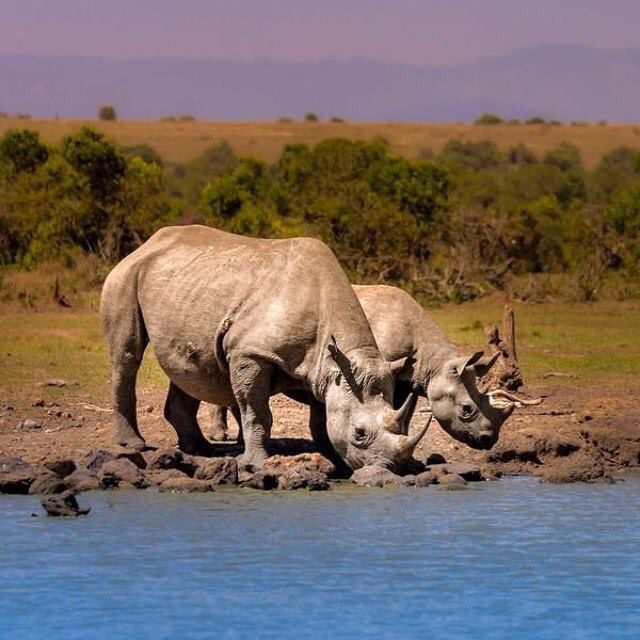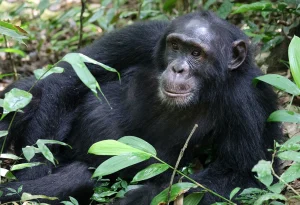East Africa is home to some of the world’s most breathtaking landscapes, unique wildlife species, and rich cultural traditions. In recent years, the region has emerged as a leading destination for eco-tourism—travel that supports environmental conservation, respects local cultures, and contributes to the well-being of communities. Eco-Tourism Destinations in East Africa
From highland gorilla forests to coral reefs teeming with marine life, East Africa offers eco-conscious travelers an array of destinations where tourism and sustainability work hand in hand. In this guide, we explore the top eco-tourism destinations in East Africa, answering the most common questions travelers search for online.
What are the best eco-tourism destinations in East Africa?
East Africa’s eco-tourism destinations are as diverse as the region’s geography. Kenya’s conservancies, Tanzania’s national parks, Uganda’s gorilla reserves, and Rwanda’s forest landscapes lead the list. For marine eco-tourism, coastal areas in Kenya and Tanzania stand out.
Eco-tourism here is about more than just beautiful scenery—it’s about preserving ecosystems, protecting endangered species, and ensuring that tourism benefits local people. The most celebrated destinations combine wildlife experiences with conservation projects and community involvement.
Which eco-friendly safari destinations are in East Africa?
Kenya’s Masai Mara Conservancies are leading examples of eco-friendly safari destinations. Instead of mass tourism, these private conservancies limit visitor numbers, reinvest profits into conservation, and share revenues with Maasai landowners. Wildlife thrives here due to controlled grazing and anti-poaching patrols.
Tanzania’s Serengeti National Park also practices eco-friendly tourism by regulating vehicle numbers in sensitive areas and promoting lodges that run on solar power, recycle water, and minimize waste. In both countries, eco-safaris focus on low-impact game viewing and cultural immersion.
What national parks in East Africa offer sustainable tourism?
Several East African national parks have implemented strong sustainability measures:
- Amboseli National Park (Kenya): Works closely with Maasai communities to protect elephant corridors.
- Ngorongoro Conservation Area (Tanzania): Integrates human habitation with wildlife conservation, allowing Maasai pastoralists to live alongside wildlife.
- Bwindi Impenetrable National Park (Uganda): Home to endangered mountain gorillas, with trekking permits funding conservation and community projects.
- Volcanoes National Park (Rwanda): Strict trekking rules protect gorillas while limiting environmental impact.
These parks focus on balancing tourism revenue with ecosystem protection.
Where can I experience community-based tourism in East Africa?
Community-based tourism is one of the most authentic and sustainable ways to explore East Africa. Examples include:
- Ol Pejeta Conservancy (Kenya): Offers cultural tours led by local residents, alongside wildlife safaris.
- Nkuringo and Buhoma villages (Uganda): Provide homestays, guided nature walks, and craft workshops.
- Cultural tourism programs in Tanzania: Allow travelers to visit Hadzabe hunter-gatherers or Chagga communities on the slopes of Mount Kilimanjaro.
These experiences give travelers a deeper understanding of local lifestyles while providing communities with direct income from tourism.
Which marine parks in East Africa are best for eco-tourism?
For marine eco-tourism, East Africa offers pristine coastal and island destinations:
- Watamu Marine National Park (Kenya): Famous for coral reefs, turtle conservation, and sustainable diving practices.
- Mafia Island Marine Park (Tanzania): Known for whale shark migration, mangrove forests, and community-managed fisheries.
- Mnemba Atoll (Zanzibar): Protected marine reserve with strict limits on diving and fishing to preserve reef ecosystems.
These areas protect marine biodiversity while offering sustainable snorkeling, diving, and eco-lodge stays.
How does eco-tourism support wildlife conservation in East Africa?
Eco-tourism provides critical funding for wildlife protection. Entrance fees, guided tours, and lodge revenues often go directly into anti-poaching patrols, habitat restoration, and wildlife monitoring.
For example, gorilla trekking in Uganda and Rwanda has funded ranger salaries and veterinary care through organizations like Gorilla Doctors. Similarly, conservancies in Kenya use tourism income to hire community rangers, ensuring wildlife corridors remain safe from human encroachment.
What eco-lodges are available in East African national parks?
Eco-lodges in East Africa are designed to blend with their surroundings while minimizing environmental impact. Examples include:
- Mahali Mzuri (Kenya): Solar-powered safari camp in the Olare Motorogi Conservancy.
- &Beyond Mnemba Island Lodge (Zanzibar): Operates with reef-safe practices and waste recycling.
- Clouds Mountain Gorilla Lodge (Uganda): Uses solar power, rainwater harvesting, and locally sourced materials.
Many lodges also contribute to conservation funds and employ local staff exclusively.
Which East African countries have the best eco-tourism experiences?
Kenya, Tanzania, Uganda, and Rwanda all rank highly for eco-tourism experiences, each offering something unique:
- Kenya: Known for its pioneering conservancies and community-based safari tourism.
- Tanzania: Combines iconic wildlife migrations with cultural heritage tourism.
- Uganda: Offers unique primate trekking experiences in lush forests.
- Rwanda: Renowned for its gorilla conservation success and forest canopy walks.
Choosing depends on whether you prefer savannah safaris, mountain treks, cultural immersion, or marine adventures.
What are the top eco-friendly travel activities in East Africa?
Top activities include:
- Primate trekking (gorillas, chimpanzees, golden monkeys).
- Birdwatching in Ramsar-listed wetlands.
- Walking safaris with trained guides.
- Snorkeling and diving in protected marine parks.
- Cycling tours through rural landscapes.
- Visiting cultural villages and craft centers.
Each activity is designed to leave minimal impact while enriching local livelihoods.
How is eco-tourism in East Africa helping local communities?
Eco-tourism creates jobs in guiding, hospitality, craft-making, and conservation work. Revenue-sharing programs ensure communities benefit financially, which reduces reliance on unsustainable activities like poaching or logging.
In Rwanda, 10% of park tourism revenue is invested in local projects like schools and health clinics. In Kenya, conservancies pay land lease fees to local pastoralists, providing a stable income that incentivizes wildlife protection.
What are the top nature reserves in East Africa for eco-tourism?
Notable reserves include:
- Lewà Wildlife Conservancy (Kenya): Protects endangered species like Grevy’s zebra and black rhino.
- Selous Game Reserve (Tanzania): UNESCO World Heritage Site with strict conservation measures.
- Budongo Forest Reserve (Uganda): Known for chimpanzee tracking and sustainable forest management.
These reserves balance visitor access with strict conservation regulations.
Which islands in East Africa offer sustainable tourism?
East Africa’s islands are ideal for low-impact travel:
- Lamu Island (Kenya): Promotes heritage preservation and dhow sailing instead of motorized tours.
- Pemba Island (Tanzania): Offers small eco-lodges and community-led spice farm tours.
- Chumbe Island Coral Park (Zanzibar): Privately managed nature reserve dedicated to marine and forest conservation.
Island tourism here emphasizes cultural respect and environmental protection.
How do national parks in East Africa promote eco-tourism?
National parks promote eco-tourism by enforcing visitor limits, using eco-friendly infrastructure, and partnering with local communities. For example, Uganda Wildlife Authority limits gorilla trekking groups to eight people, while Kenya’s conservancies restrict vehicle numbers during game drives to prevent habitat damage.
Many parks also run conservation education programs for both visitors and residents, fostering long-term environmental stewardship.
What is the role of eco-tourism in protecting East Africa’s biodiversity?
Eco-tourism gives economic value to biodiversity, making conservation financially viable. Without the income from responsible tourism, many parks would lack the resources to prevent poaching, illegal logging, or overfishing.
By attracting nature-loving travelers willing to pay for sustainable experiences, eco-tourism ensures that wildlife and habitats are preserved for future generations.
What cultural experiences are part of eco-tourism in East Africa?
Cultural immersion is a key aspect of eco-tourism. Visitors can:
- Attend traditional dances and ceremonies.
- Learn beadwork, weaving, or pottery from artisans.
- Participate in farm-to-table cooking experiences.
- Visit heritage sites and museums.
These experiences preserve cultural heritage while providing income for local artisans and guides.
Final Thoughts
Eco-tourism in East Africa offers travelers the chance to enjoy unforgettable natural and cultural encounters while directly supporting conservation and communities. By choosing eco-friendly destinations, lodges, and activities, visitors play a role in protecting the region’s unique biodiversity and traditions.
From the savannah plains of the Masai Mara to the coral reefs of Zanzibar, East Africa proves that tourism, when done responsibly, can be a force for good.




